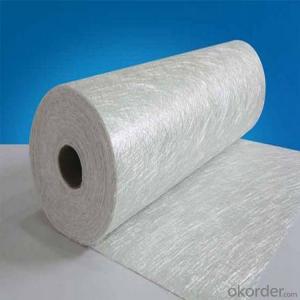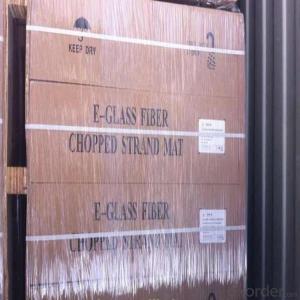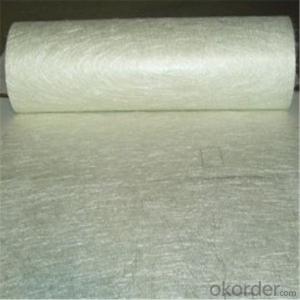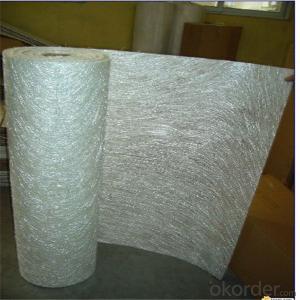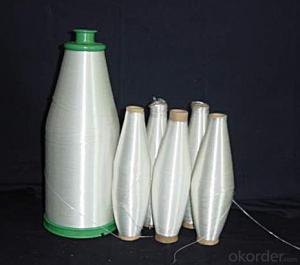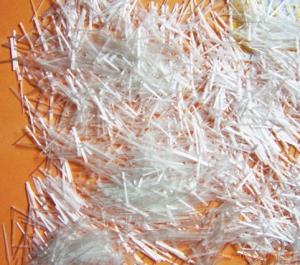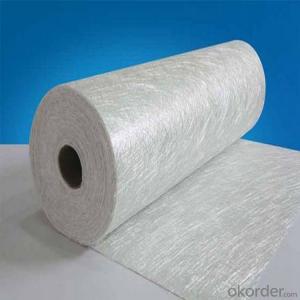100g-900g/m2 Fiberglass Chopped Strand Mat
- Loading Port:
- China main port
- Payment Terms:
- TT OR LC
- Min Order Qty:
- 1 kg
- Supply Capability:
- 10000 kg/month
OKorder Service Pledge
OKorder Financial Service
You Might Also Like
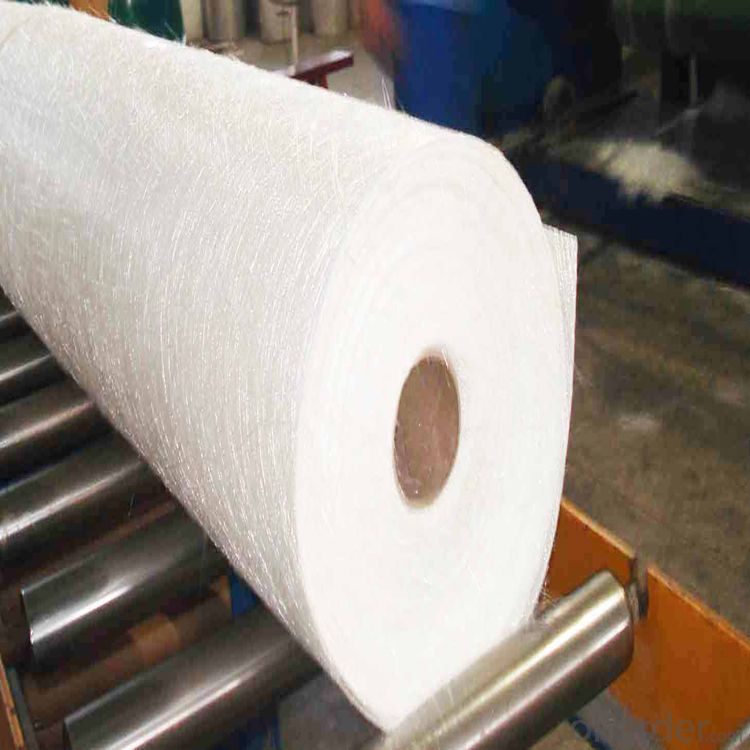
Product Description:
Chopped strand mat is made from chopped glass fibers, which are bonded with powder or emulsion binders. It can be used in hand lay-up process and continuous laminating process to produce FRP products, such as plates, lighting board, hull, bathtub, cooling towers, anti-corrosion materials, vehicles.
Features:
Uniform thickness, softness and hardness good.
Good compatibility with resin, easy completely wet-out.
Fast and consistent wet-out speed in resins and good manufacturability.
Good mechanical properties, easy cutting.
Good cover mold, suitable for modeling complex shapes.
Application:
fiberglass thickness is suitable for application by hand lay-up, reinforce and machine FRP molding,
including interior decoration of vehicles, boat hulls, complete set of sanitary equipment, anticorrosive pipes, tanks, building materials, tables, chairs, panels and all kind of composite FRP products.
Specifications:
Item | Over Density | Moisture Content | Chop Density | Polyester Yarn | Width |
(g/m2) | (%) | (g/m2) | (g/m2) | (mm) | |
EMK300 | 309.5 | ≤0.15 | 300 | 9.5 | 50-3300 |
EMK380 | 399 | 380 | 19 | ||
EMK450 | 459.5 | 450 | 9.5 | ||
EMK450 | 469 | 450 | 19 | ||
EMC0020 | 620.9 | 601.9 | 19 | ||
EMC0030 | 909.5 | 900 | 9.5 |
Special products are available according to customer’s requirement.
Product Packaging:
Each Surface Tissue is wound onto a paper tube which has an inside diameter of 76mm and the mat roll has a diameter of 330mm. The mat roll is wrapped up with plastic film,and then packed in a cardboard box or wrapped up with kraft paper. The rolls can be vertically or horizontally placed. For transportation, the rolls can be loaded into a cantainer directly or on pallets.
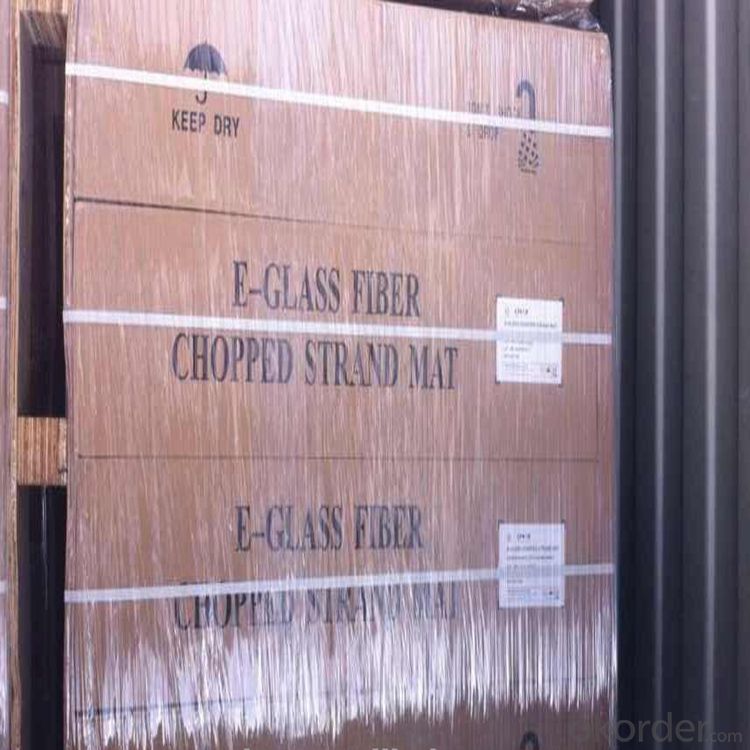
Product Storage:
Unless otherwise specified, Chopped Strand Mat should be stored in a dry, cool and rain-proof area. It is recommended that the room temperature and humidity should be always maintained at 15℃~35℃ and 50%~75% respectively.
Company Information
CNBM (China National Building Material) Group is the largest comprehensive building materials group in China that in integrate scientific research, manufacturing and logistics into one entity. The largest building materials and equipment specialists in China. Upon State Council approval, today CNBM owned more than 300 subordinate manufacturing factories and servicing companies. There are 6 fully owned public listed companies and 11 partially owned with substantial shares public listed companies. In many of these fields, CNBM is playing the leading role in the building industry in the country.

Order Information
Ordering please specify:
1. the product code, 2. weight, 3. width, 4. order quantity, 5. packaging, 6. special requirements please specify.
FAQ:
1. How long will you get reply?
Any inquiry will be replied within 24 hours. Usually we will reply within 12 hours.
2. How long is warranty period?
We provide 3 year warranty period.
3. What is your MOQ?
Any order quantity is available.
4. Can you provide sample?
Yes, samples are in stock. we can offer free sample for you.
5. Payment terms?
We can accept L/C, T/T, Western Union, Paypal etc.
6. Do you offer OEM service?
Yes, we can print customers’ logo on the packaging;
And the size and specification can be produced and design according to your demand.
7. What is the Production Lead Time?
15-20 days for bulk production after confirm the order.
- Q:How does the fiber volume fraction affect the performance of fiberglass chopped strand?
- The fiber volume fraction in fiberglass chopped strand directly affects its performance. Higher fiber volume fractions generally result in improved mechanical properties, such as increased strength, stiffness, and impact resistance. This is because a higher volume fraction means more fibers are present, leading to enhanced load-bearing capacity and better distribution of stress. Additionally, a higher fiber volume fraction can also improve the dimensional stability and thermal properties of fiberglass chopped strand, making it more suitable for applications where these characteristics are crucial.
- Q:Is fiberglass chopped strand suitable for electrical conductive applications?
- No, fiberglass chopped strand is not suitable for electrical conductive applications. Fiberglass is an insulating material and does not conduct electricity. In fact, it is commonly used in electrical applications for its excellent electrical insulation properties. If electrical conductivity is required, other materials such as metals, carbon fibers, or conductive polymers would be more appropriate choices.
- Q:Can fiberglass chopped strand be used in the production of wind turbine blades?
- Yes, fiberglass chopped strand can be used in the production of wind turbine blades. It is commonly used as a reinforcement material in composite structures, providing strength and durability to the blades. The fiberglass chopped strand is typically mixed with resin and other additives to form a composite material that can withstand the high stresses and loads experienced by wind turbine blades.
- Q:Can fiberglass chopped strand be used in the production of wind turbine nacelles?
- Yes, fiberglass chopped strand can be used in the production of wind turbine nacelles. Fiberglass chopped strand is commonly used as a reinforcement material in composite manufacturing processes. The nacelle of a wind turbine is typically made from a composite material, which consists of a combination of fiberglass and resin. The fiberglass chopped strand is added to the resin matrix to enhance the mechanical properties and provide strength and durability to the nacelle. It helps to improve the overall structural integrity and stability of the wind turbine nacelle, making it suitable for withstanding the harsh conditions and load demands of wind turbine operation. Additionally, fiberglass chopped strand is lightweight and corrosion-resistant, which are desirable characteristics for wind turbine applications. Therefore, it is a commonly used material in the production of wind turbine nacelles.
- Q:Can fiberglass chopped strand be used in marine structures?
- Yes, fiberglass chopped strand can be used in marine structures. It is commonly used in the construction of boats, yachts, and other marine vessels due to its high strength, durability, and resistance to water and corrosion. Additionally, fiberglass chopped strand can provide excellent reinforcement and structural integrity to marine components, making it a suitable choice for various applications in the marine industry.
- Q:How is the creep resistance of fiberglass chopped strand composites tested?
- Fiberglass chopped strand composites are commonly tested for their creep resistance using a range of methods. One approach involves subjecting the composite material to a constant load or stress for an extended duration, typically at higher temperatures. This method, known as the creep test, allows for the evaluation of the composite's ability to resist deformation and maintain its structural integrity under prolonged load conditions. Throughout the creep test, the composite specimen is placed under constant stress, and its deformation is continuously measured over time. Specialized equipment, such as a creep testing machine, applies the desired load and monitors the deformation. Elevated temperatures are utilized during the test as creep is more apparent under such conditions. The outcomes of the creep test are typically represented as creep curves, which illustrate the relationship between deformation and time under the applied stress. These curves offer valuable insights into the creep behavior of the fiberglass chopped strand composite, including the rate of deformation, the time-dependent nature of creep, and the potential for failure. By assessing the creep resistance of fiberglass chopped strand composites, manufacturers and researchers can determine their suitability for various applications, such as structural components in construction, automotive parts, and aerospace components. This testing ensures that the composite material can endure long-term loading without excessive deformation or failure, instilling confidence in its performance and durability.
- Q:How is fiberglass chopped strand manufactured?
- Fiberglass chopped strand is manufactured through a specific process that involves several steps. Firstly, glass fibers are drawn from molten glass in a continuous process, using a process called fiberization. These glass fibers are then coated with a sizing material to enhance their performance and ensure better adhesion to the resin matrix. After the sizing process, the glass fibers are cut into shorter lengths, typically ranging from a few millimeters to several centimeters. This cutting process is known as chopping. It can be done mechanically using rotating blades or by air-assisted methods, such as a pneumatic gun that blows the fibers against a fast-moving blade. Once chopped, the strands are collected and packaged for distribution or further processing. The packaging can vary depending on the specific needs of the customer, but it is typically in the form of compressed bales or bags. During the manufacturing process, it is crucial to control the length and consistency of the chopped strands. This is achieved by adjusting the cutting speed and blade configuration to meet the desired specifications. Quality control checks are also performed to ensure that the chopped strands meet the required standards for strength, length, and diameter. Overall, the manufacturing of fiberglass chopped strand involves the fiberization of glass, coating the fibers with sizing, cutting them into shorter lengths, and then packaging them for use in various applications such as reinforced plastics, thermoplastic molding, and construction materials.
- Q:How is the surface roughness of fiberglass chopped strand measured?
- The surface roughness of fiberglass chopped strand is typically measured using a profilometer. A profilometer is a device that measures the height variations of a surface by running a stylus or a laser probe over it. The stylus or laser probe moves across the surface in a controlled manner and records the vertical displacement of the surface at multiple points along the path. The data collected is then used to generate a profile of the surface roughness. In the case of fiberglass chopped strand, the profilometer is used to measure the roughness of the individual glass fibers. The chopped strand is placed on a flat surface, and the stylus or laser probe is moved over the fibers to measure their height variations. The measurements are typically taken at multiple points along the length of the fibers to get an accurate representation of the surface roughness. The surface roughness of fiberglass chopped strand is often expressed in terms of Ra, which is the arithmetic average of the absolute values of the measured surface height deviations. Ra provides a quantitative measure of the roughness of the surface and is commonly used in the industry to compare different materials or manufacturing processes. By measuring the surface roughness of fiberglass chopped strand, manufacturers can ensure that the quality of their product meets the required standards. It also helps to determine the suitability of the fiberglass for specific applications where surface roughness may be a critical factor, such as in composite materials or reinforcement in various industries.
- Q:Is fiberglass chopped strand suitable for thermal insulation?
- Yes, fiberglass chopped strand is suitable for thermal insulation. It is commonly used in construction and manufacturing to provide effective insulation against heat transfer, helping to maintain desired temperatures and reduce energy consumption.
- Q:Can fiberglass chopped strand be used in wind turbine rotor blades?
- Yes, fiberglass chopped strand can be used in wind turbine rotor blades. Fiberglass is a common material used in the construction of wind turbine blades due to its lightweight, high strength, and corrosion resistance properties. Chopped strand mat, which consists of short strands of fiberglass held together with a binder, is often used in the manufacturing process. These chopped strands are typically laid up in a specific pattern and then impregnated with resin to form a composite material that is both strong and flexible. This composite material is then molded into the desired shape of the wind turbine blade. Overall, fiberglass chopped strand is a suitable and widely used material for constructing wind turbine rotor blades.
1. Manufacturer Overview |
|
|---|---|
| Location | |
| Year Established | |
| Annual Output Value | |
| Main Markets | |
| Company Certifications | |
2. Manufacturer Certificates |
|
|---|---|
| a) Certification Name | |
| Range | |
| Reference | |
| Validity Period | |
3. Manufacturer Capability |
|
|---|---|
| a)Trade Capacity | |
| Nearest Port | |
| Export Percentage | |
| No.of Employees in Trade Department | |
| Language Spoken: | |
| b)Factory Information | |
| Factory Size: | |
| No. of Production Lines | |
| Contract Manufacturing | |
| Product Price Range | |
Send your message to us
100g-900g/m2 Fiberglass Chopped Strand Mat
- Loading Port:
- China main port
- Payment Terms:
- TT OR LC
- Min Order Qty:
- 1 kg
- Supply Capability:
- 10000 kg/month
OKorder Service Pledge
OKorder Financial Service
Similar products
New products
Hot products
Hot Searches
Related keywords
